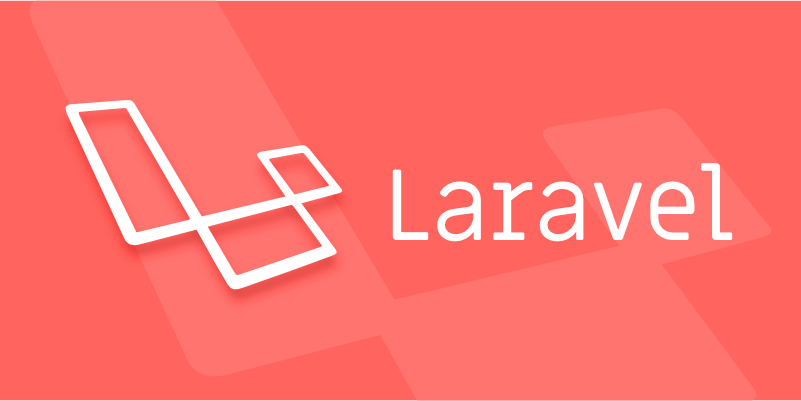How to create a custom service provider in Laravel?
使用 php artisan make:provider MyCustomServiceProvider 创建服务提供者;2. 在 register() 方法中绑定服务,如 $this->app->singleton(PaymentGateway::class, ...);3. 在 boot() 方法中发布配置、加载路由或视图等;4. 将服务提供者类添加到 config/app.php 的 providers 数组中;5. 可选地通过 publishes()、loadViewsFrom() 等方法加载资源;6. 测试服务解析和功能是否正常,确保配置和依赖正确加载并可用。

Creating a custom service provider in Laravel is a straightforward process and is useful when you want to encapsulate and organize your application's bootstrapping logic—like registering bindings, loading configuration, or setting up third-party packages.

Here’s how to create and register a custom service provider in Laravel.
1. Generate the Service Provider
Use the Artisan command to generate a new service provider:

php artisan make:provider MyCustomServiceProvider
This will create a new file at app/Providers/MyCustomServiceProvider.php.
2. Understand the Structure
A service provider has two main methods:

register()– Use this to bind services into the Laravel service container. Avoid registering event listeners, routes, or other functionality here.boot()– This runs after all other service providers have been registered. Use this to register event listeners, middleware, routes, or perform any other boot-time logic.
Example of a basic service provider:
<?php
namespace App\Providers;
use Illuminate\Support\ServiceProvider;
use App\Services\PaymentGateway;
class MyCustomServiceProvider extends ServiceProvider
{
public function register()
{
// Bind a service to the container
$this->app->singleton(PaymentGateway::class, function ($app) {
return new PaymentGateway(config('services.payment.secret_key'));
});
}
public function boot()
{
// Publish configuration file (optional)
$this->publishes([
__DIR__.'/../Config/payment.php' => config_path('payment.php'),
], 'config');
// Load routes, views, or other assets if needed
// $this->loadRoutesFrom(__DIR__.'/../routes/payment.php');
}
}3. Register the Service Provider
By default, Laravel loads service providers from the config/app.php file.
Add your provider to the providers array:
'providers' => [
// Other Service Providers
App\Providers\MyCustomServiceProvider::class,
],Laravel also supports package discovery, so if you're building a reusable package, you can auto-register via
composer.json. But for app-specific providers, manual registration is standard.
4. (Optional) Use for Configuration, Routes, or Views
You can extend your service provider to do more:
- Publish config files using
publishes()inboot(). - Load routes with
loadRoutesFrom(). - Load views with
loadViewsFrom(). - Register commands, events, or middleware.
Example: Loading views
$this->loadViewsFrom(__DIR__.'/../Resources/views', 'mypackage');
Then use them in your app like: @include('mypackage::sidebar').
5. Test the Service Provider
After registering, test that your bindings or features work:
// In a controller or route $gateway = app(PaymentGateway::class); dd($gateway); // Should resolve correctly
Also, if you published config, check that the file appears in config/payment.php.
Summary
- Use
php artisan make:providerto create a new provider. - Bind services in
register(), boot features inboot(). - Register it in
config/app.phpunderproviders. - Optionally load views, config, routes, etc.
- Test that everything resolves and loads as expected.
That’s it—now you can organize your app’s setup logic cleanly using custom service providers.
The above is the detailed content of How to create a custom service provider in Laravel?. For more information, please follow other related articles on the PHP Chinese website!

Hot AI Tools

Undress AI Tool
Undress images for free

Undresser.AI Undress
AI-powered app for creating realistic nude photos

AI Clothes Remover
Online AI tool for removing clothes from photos.

Clothoff.io
AI clothes remover

Video Face Swap
Swap faces in any video effortlessly with our completely free AI face swap tool!

Hot Article

Hot Tools

Notepad++7.3.1
Easy-to-use and free code editor

SublimeText3 Chinese version
Chinese version, very easy to use

Zend Studio 13.0.1
Powerful PHP integrated development environment

Dreamweaver CS6
Visual web development tools

SublimeText3 Mac version
God-level code editing software (SublimeText3)
 Strategies for optimizing Laravel application performance
Jul 09, 2025 am 03:00 AM
Strategies for optimizing Laravel application performance
Jul 09, 2025 am 03:00 AM
Laravel performance optimization can improve application efficiency through four core directions. 1. Use the cache mechanism to reduce duplicate queries, store infrequently changing data through Cache::remember() and other methods to reduce database access frequency; 2. Optimize database from the model to query statements, avoid N 1 queries, specifying field queries, adding indexes, paging processing and reading and writing separation, and reduce bottlenecks; 3. Use time-consuming operations such as email sending and file exporting to queue asynchronous processing, use Supervisor to manage workers and set up retry mechanisms; 4. Use middleware and service providers reasonably to avoid complex logic and unnecessary initialization code, and delay loading of services to improve startup efficiency.
 Choosing between Laravel Sanctum and Passport for API authentication
Jul 14, 2025 am 02:35 AM
Choosing between Laravel Sanctum and Passport for API authentication
Jul 14, 2025 am 02:35 AM
LaravelSanctum is suitable for simple, lightweight API certifications such as SPA or mobile applications, while Passport is suitable for scenarios where full OAuth2 functionality is required. 1. Sanctum provides token-based authentication, suitable for first-party clients; 2. Passport supports complex processes such as authorization codes and client credentials, suitable for third-party developers to access; 3. Sanctum installation and configuration are simpler and maintenance costs are low; 4. Passport functions are comprehensive but configuration is complex, suitable for platforms that require fine permission control. When selecting, you should determine whether the OAuth2 feature is required based on the project requirements.
 Managing database state for testing in Laravel
Jul 13, 2025 am 03:08 AM
Managing database state for testing in Laravel
Jul 13, 2025 am 03:08 AM
Methods to manage database state in Laravel tests include using RefreshDatabase, selective seeding of data, careful use of transactions, and manual cleaning if necessary. 1. Use RefreshDatabasetrait to automatically migrate the database structure to ensure that each test is based on a clean database; 2. Use specific seeds to fill the necessary data and generate dynamic data in combination with the model factory; 3. Use DatabaseTransactionstrait to roll back the test changes, but pay attention to its limitations; 4. Manually truncate the table or reseed the database when it cannot be automatically cleaned. These methods are flexibly selected according to the type of test and environment to ensure the reliability and efficiency of the test.
 Implementing Database Transactions in Laravel?
Jul 08, 2025 am 01:02 AM
Implementing Database Transactions in Laravel?
Jul 08, 2025 am 01:02 AM
Laravel simplifies database transaction processing with built-in support. 1. Use the DB::transaction() method to automatically commit or rollback operations to ensure data integrity; 2. Support nested transactions and implement them through savepoints, but it is usually recommended to use a single transaction wrapper to avoid complexity; 3. Provide manual control methods such as beginTransaction(), commit() and rollBack(), suitable for scenarios that require more flexible processing; 4. Best practices include keeping transactions short, only using them when necessary, testing failures, and recording rollback information. Rationally choosing transaction management methods can help improve application reliability and performance.
 Handling HTTP Requests and Responses in Laravel.
Jul 16, 2025 am 03:21 AM
Handling HTTP Requests and Responses in Laravel.
Jul 16, 2025 am 03:21 AM
The core of handling HTTP requests and responses in Laravel is to master the acquisition of request data, response return and file upload. 1. When receiving request data, you can inject the Request instance through type prompts and use input() or magic methods to obtain fields, and combine validate() or form request classes for verification; 2. Return response supports strings, views, JSON, responses with status codes and headers and redirect operations; 3. When processing file uploads, you need to use the file() method and store() to store files. Before uploading, you should verify the file type and size, and the storage path can be saved to the database.
 Generating URLs for Named Routes in Laravel.
Jul 16, 2025 am 02:50 AM
Generating URLs for Named Routes in Laravel.
Jul 16, 2025 am 02:50 AM
The most common way to generate a named route in Laravel is to use the route() helper function, which automatically matches the path based on the route name and handles parameter binding. 1. Pass the route name and parameters in the controller or view, such as route('user.profile',['id'=>1]); 2. When multiple parameters, you only need to pass the array, and the order does not affect the matching, such as route('user.post.show',['id'=>1,'postId'=>10]); 3. Links can be directly embedded in the Blade template, such as viewing information; 4. When optional parameters are not provided, they are not displayed, such as route('user.post',
 What is Configuration Caching in Laravel?
Jul 27, 2025 am 03:54 AM
What is Configuration Caching in Laravel?
Jul 27, 2025 am 03:54 AM
Laravel's configuration cache improves performance by merging all configuration files into a single cache file. Enabling configuration cache in a production environment can reduce I/O operations and file parsing on each request, thereby speeding up configuration loading; 1. It should be enabled when the application is deployed, the configuration is stable and no frequent changes are required; 2. After enabling, modify the configuration, you need to re-run phpartisanconfig:cache to take effect; 3. Avoid using dynamic logic or closures that depend on runtime conditions in the configuration file; 4. When troubleshooting problems, you should first clear the cache, check the .env variables and re-cache.
 Configuring and Using Queue Priorities in Laravel
Jul 08, 2025 am 01:43 AM
Configuring and Using Queue Priorities in Laravel
Jul 08, 2025 am 01:43 AM
Laravel's queue priority is controlled through the startup sequence. The specific steps are: 1. Define multiple queues in the configuration file; 2. Specify the queue priority when starting a worker, such as phpartisanqueue:work--queue=high,default; 3. Use the onQueue() method to specify the queue name when distributing tasks; 4. Use LaravelHorizon and other tools to monitor and manage queue performance. This ensures that high-priority tasks are processed first while maintaining code maintainability and system stability.







